SUMMARY
This is AI generated summarization, which may have errors. For context, always refer to the full article.
![[OPINION] Religious abuses: Why they happen and what needs to be done](https://www.rappler.com/tachyon/2023/10/tl-religious-abuse.jpg)
Religious abuse happens, whether we admit it or not. And it comes in many forms.
It can be verbal or emotional, but religious abuse also often comes with sexual abuse.
Scholars have already offered many definitions about religious abuse, but three elements are salient: “the misuse of spiritual authority, the act of taking advantage of a follower, and the harm it brings to the victim.”
Crucial here is the role of the religious authority. Often involved are priests, pastors, ministers, and other leaders who manipulate their followers into submission. They successfully do so through control, humiliation, threats, and intimidation.
Because they are in effect representatives of God (or God himself), the shame they engender among their victims is much deeper.
Thanks to the national coverage surrounding Socorro Bayanihan Services Incorporated (SBSI), many of us are now aware of the dangers of religious abuse. From child marriages to forced labor, SBSI’s leaders have a lot of explaining to do and must be brought to justice.
But that may not be the case under normal circumstances.
In the course of my work as a sociologist of religion, I have encountered people who tend to deny that these things exist, especially if they involve their own churches. Without realizing it, others downplay them by referring to abusers as mere anomalies or a case of one bad apple in the barrel.
Anywhere
To claim these as outliers is not wise. Doing so dismisses the reality of religious abuses — and it doesn’t matter whether a religion is big or small.
As many scholars have already pointed out, they can “occur in any religion or faith-based community.” This is true around the world, whether it’s the Catholic Church in Switzerland, Hillsong in Australia and the US, ultra-Orthodox Jews in Israel, or new religious movements everywhere else.
In the Philippines, it’s impossible to get a reliable number since many of them are not reported. But some accounts are indicative.
In 2017, Al Jazeera reported that sexual abuse allegations against Catholic priests in the Philippines were on the rise. But it was not the first to do so. Aries Rufo, in 2013, published Altar of Secrets, the first book of its kind to document sexual abuses involving high-profile bishops.
Based in Davao, Apollo Quiboloy is a figure who has yet to face justice over “systemic and pervasive rape and other physical abuse.” No less than the US Federal Bureau of Investigation wants him arrested. Years after celebrating its centenary, the Iglesia ni Cristo also had to deal with a series of controversies that involved corruption. Whistleblowers were excommunicated and harassed.
To this list could be added many other instances of religious abuse in small communities.
Consider conversion therapy, for example. It is in itself already abusive, but we have credible reports that in some cases it has involved physical punishment. And just this year, the senior pastor of an evangelical church in Puerto Princesa was arrested for acts of lasciviousness.
These abuses — and there are many more left unreported — leave a trail of traumatized individuals who will have to deal with guilt, shame, and anxiety for a long, long time. It’s also unfortunate that for one reason or another only the sensational cases attract national attention.
Why
No one explanation can account for religious abuses. But allow me to highlight two areas based on research.
The first is the weaponization of beliefs. Religious abuse typically involves beliefs that justify the behavior.
Religious authorities draw their power from a divine mandate. They usually present themselves as God’s representatives. This idea is what abusers take advantage of, especially if their followers consider them above reproach.
At the same time, religious communities thrive on values of solidarity like love, sacrifice, and faithfulness. While these are noble, they may also be weaponized. Thus there’s a thin line between empowerment and enslavement in belonging to a “spiritual family.” In abusive settings, shaming is “routinely and consistently presented, and justified as love.”
In this light, it doesn’t matter if religious authorities look frail or unspectacular to outsiders. It doesn’t matter too whether their practices seem unreasonable or evidently abusive.
As far as insiders are concerned, their religious leaders deserve the respect and loyalty of everyone who belongs to the spiritual family. Bearing this charisma, religious leaders can convince followers to donate everything they have, have sex with minors, and compel women to speak and behave in a particular manner — and justify all of these demands as God’s will.
It’s for this reason that many in such religious environments would rather not disobey. To do so is in effect to rebel against God, putting at risk not just their self-worth but also eternal salvation. As the Chilean theologian Samuel Fernández puts it, “the abuser takes the place of God in the faithful’s conscience.”
But to blame only one individual is a mistake. This is where the structural aspect of religious abuse comes in.
Religious abuse is enabled in an environment where accountability is weak. Religious communities governed by only one man are particularly susceptible to abuse of power. To whom is this person responsible if he makes grievous errors?
Match this organizational structure with a belief system that renders one man above reproach and you have religious abuses sanctioned even by followers.
It needs to be mentioned too that children are particularly vulnerable in these religious settings. Children abused by religious authorities, according to research, do not realize the severity of their experiences until much later in life.
In these environments, those who dare to disobey God’s anointed are excommunicated not just from the presence of God. Their spiritual family rejects them too. This validates a sociological insight: Religion is not just about belief in God or obedience to one man. It’s also about the community of adherents bound together by a set of virtues and loyalties.
Thus, when put under public scrutiny, the religious institution will want to protect its integrity by denying these abuses. As a result, victims are left alone, most of whom end up blaming themselves for what has happened to them.
What to do
It’s one thing to talk about religious abuses, but it’s quite another to confront it pointblank. But for this no silver bullet is available. Because religious abuses affect all of us, a multi-faced approach is necessary.
The first is for different religious groups to take accountability very seriously. This means setting up mechanisms where grievances are heard, addressed, and even publicly confessed.
To take heed is wise for any religion: it sends a positive signal to society that they are legitimate and trustworthy.
Around the world, we know that many people, especially young ones, leave religion because they feel betrayed. And if abuses take place within religious organizations, feelings of betrayal, according to sociologist Robert Wuthnow, are far more consequential. They strike, after all, at the core of cherished religious values such as love, fidelity, and truthfulness.
This of course is an uphill battle in high-control religious settings where people in power are never questioned. This is perhaps where civil society can play a role, providing support for therapy and creating spaces where victims can report abuses.
The only caveat is that they need to build their capacity with respect to religious trauma. Psychologists and other religion scholars might be helpful.
Finally, it’s high time for the state to step up its protective mechanisms against religious abuses. I know this is a tricky matter given the separation of church and state, but still worth exploring if only to protect the welfare of our citizens.
This is why I hope that the current investigations involving SBSI will not only focus on what happened. The conversation must also consider what else the state could do to make sure that religious groups, regardless of their size or status in the community, are held accountable. Our legislators and lawyers might find useful the contentious debates surrounding France’s About-Picard Law.
I also hope that these investigations will lead to enhancing the capacity of the state to support survivors. Religious trauma calls for specialized interventions. Given the state of religious abuse in the country, to say that these are much needed is an understatement.
Here to stay
Religious abuses are here to stay.
That this is the case has nothing to do with whether a religion is small or big, new or established, weird or well-liked. Religious abuses are to be expected for as long as accountability among religious leaders is weak and for as long as they keep conformity a virtue. They will also continue for as long as followers have no viable options to exit and be protected.
That religious abuses happen in our society is a great irony. The Philippines, after all, is among the world’s most religious societies. Many of us take pride in the values we cherish and the traditions we celebrate.
But if many other religious abuses remain unchecked, I wonder what the future might look like for a society that would only increasingly feel betrayed. The hard lesson is this: many of us take pride in our religiosity, but many others are also betrayed by it.
In the name of all the good that every religion upholds, it’s time their voices were heard. – Rappler.com
Jayeel Cornelio, PhD is Professor of Development Studies at the Ateneo de Manila University and concurrently Visiting Professor in the Graduate School at the University of St La Salle. He has written extensively on religion and public life. Follow him on Twitter @jayeel_cornelio.
Add a comment
How does this make you feel?
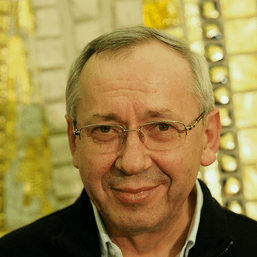

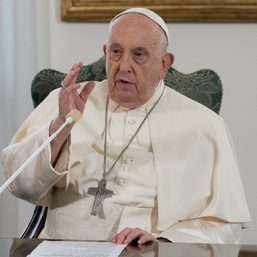

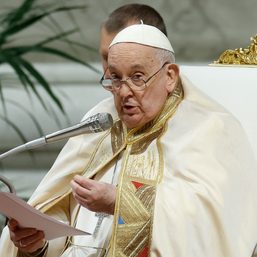


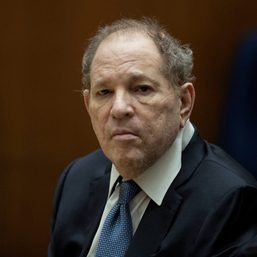

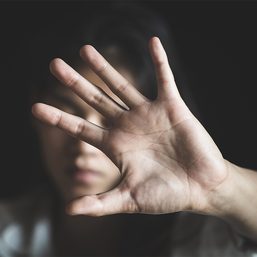
There are no comments yet. Add your comment to start the conversation.